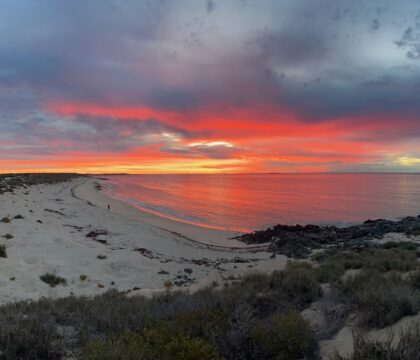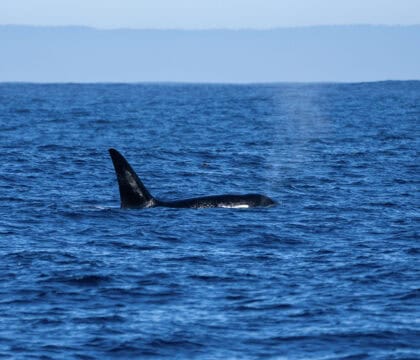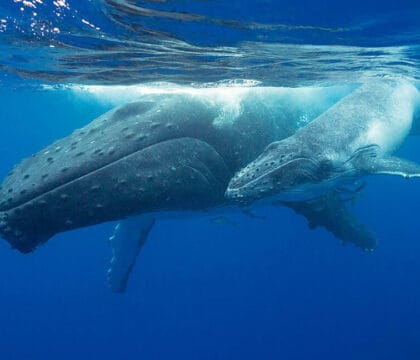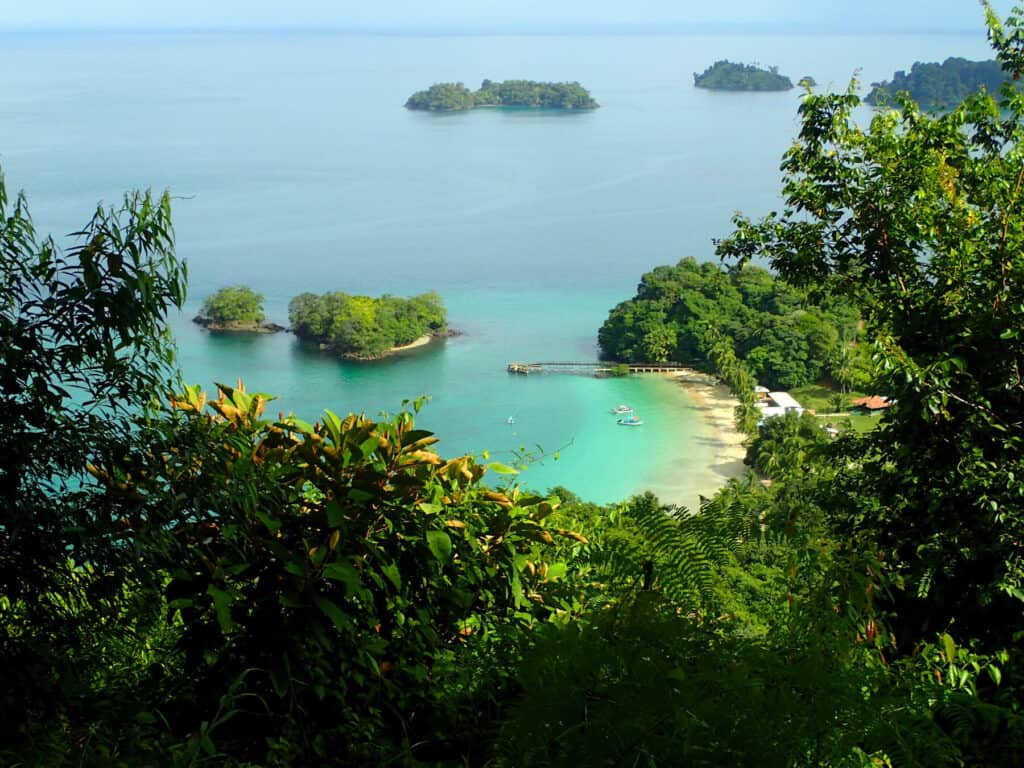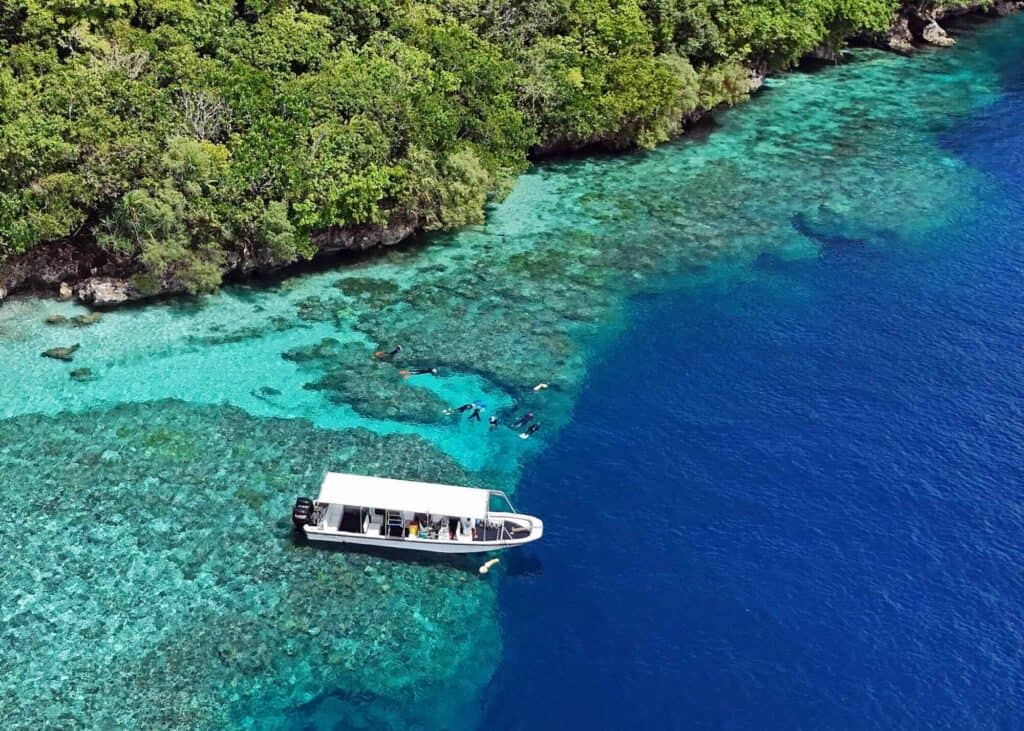September 25, 2025 • Travel Ideas
Snorkeling is one of the most accessible and rewarding ways to explore the underwater world. From colorful coral reefs to curious marine life, it offers unforgettable experiences for beginners and seasoned adventurers alike. However, even small mistakes can make your trip less enjoyable or even unsafe. Here are five common snorkeling mistakes and tips on how to avoid them.
1. Skipping the Gear Check
Many snorkelers underestimate the importance of properly checking their gear before entering the water. A leaky mask, fins that don’t fit, or a snorkel blocked with water can quickly turn a fun adventure into a frustrating experience. Beginners often notice a problem once they’ve already entered the water, which can lead to stress or even cutting the experience short. Even experienced snorkelers benefit from a quick gear check, as subtle leaks or poorly adjusted straps can impact comfort, safety, and ability to move efficiently.
How to Avoid It:
- Test your mask, snorkel, and fins in shallow water first.
- Make sure your mask is snug but not too tight, and that your snorkel is free of water. To check the fit of your mask, press it gently to your face and inhale sharply through your nose. If the mask creates a seal and stays in place without you holding it, it fits properly.
- Check our Snorkel Gear Guide for tips on selecting the right equipment for your next adventure.
When buying a snorkel mask, our guides share one crucial rule: avoid full-face masks. They can be difficult to remove, may fill with water unexpectedly, and in some cases have led to drowning. For your safety, choose a traditional snorkel mask instead.
Pro Tip: Spend a few minutes adjusting your gear with the guidance of an Oceanic Society naturalist—they often provide insights on proper fit and usage to make your snorkeling experience smooth and comfortable.

Members of an Oceanic Society expedition prepare to snorkel after testing gear in Cuba’s Jardines de la Reina (Gardens of the Queen) National Park. © Lindsay Mosher
2. Not Controlling Your Breathing
Breathing through a snorkel can feel awkward at first. If you start to feel overwhelmed in the open ocean, stay calm and take slow, steady breaths. Avoid holding your breath or panicking, which can make you tire quickly and lose control in the water.
How to Avoid It:
- Practice breathing through your snorkel while floating in shallow water before venturing out to the ocean.
- Keep your face in the water and focus on slow, deep breaths to conserve energy.
Pro Tip: Oceanic Society naturalists can demonstrate breathing techniques and help you feel comfortable in open water, making it easier to observe marine life calmly.
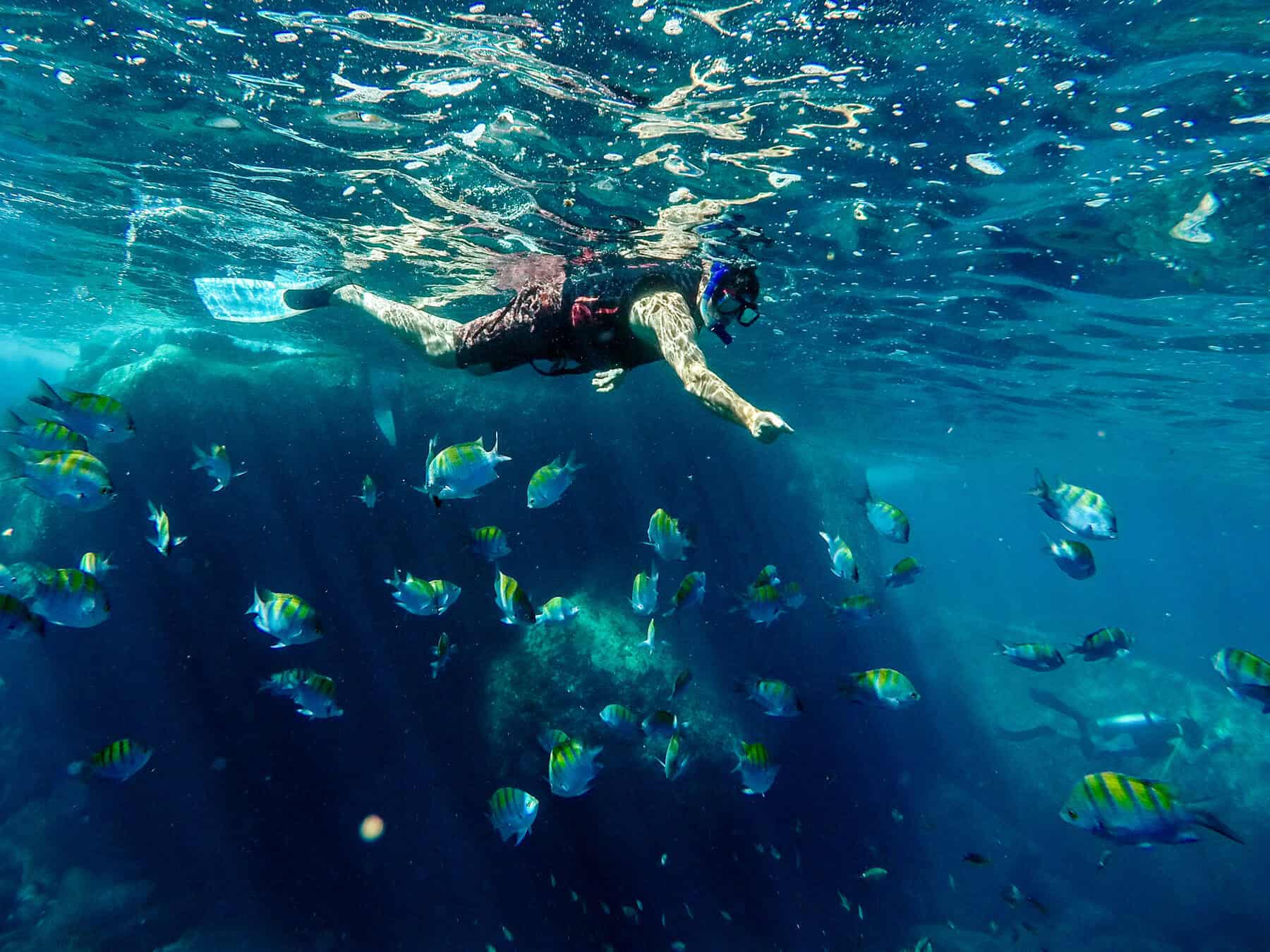
A snorkeler explores the vibrant reefs of Cabo Pulmo. © RED Travel
3. Touching or Chasing Wildlife
It’s natural to want to get a closer look at a colorful fish, coral, or curious turtle. However, maintaining a respectful distance helps protect both the animals and their habitat and ensures your own safety.
Slow, deliberate movements exude a sense of calm and allow you to observe marine life up close without disturbing them – often resulting in better photo opportunities and more memorable encounters.
Paying attention to your surroundings also helps preserve fragile coral and sensitive ecosystems for future snorkelers.
How to Avoid It:
- Maintain a safe distance from all marine creatures, including corals.
- Move slowly and deliberately, letting wildlife approach you instead of the other way around.
- Appreciate the wonders of nature from a distance rather than seeking physical interactions.
Pro Tip: Naturalists will provide insight into common animal behavior, helping you anticipate movements and spot unique interactions. Following their guidance allows for intimate encounters while keeping wildlife safe.
A snorkeler keeps a respectful distance while photographing a hawksbill sea turtle.
For more guidance, check out our Top 10 Tips to Capture the Best Underwater Photography.
4. Ignoring Changing Ocean Conditions
Strong currents, shallow reefs, or nearby boats can create hazards if you’re not paying attention to your surroundings. Many snorkelers focus so much on the underwater scenery that they forget to monitor changing conditions, which can lead to accidents or damage to the reef. Being aware of tides, currents, and the layout of the reef is essential for both safety and conservation. Observing the environment carefully also helps you spot the best marine life without disturbing it.
Oceanic Society naturalists and local guides are well-informed and will point out safe snorkeling paths and highlight interesting reef formations. Listening to experts is key as they are knowledgeable about changes in ocean conditions and can make in-the-moment decisions to ensure you snorkel in the safest, most vibrant areas. This guidance not only keeps you safe but also helps you experience marine life responsibly, without disturbing the environment.
How to Avoid It:
- Always snorkel with a buddy and stay within safe, designated areas.
- Listen to your guide’s instructions about currents, tides, and safe swimming paths.
- Learn about reef layouts to avoid stepping on fragile coral or disturbing marine habitats.
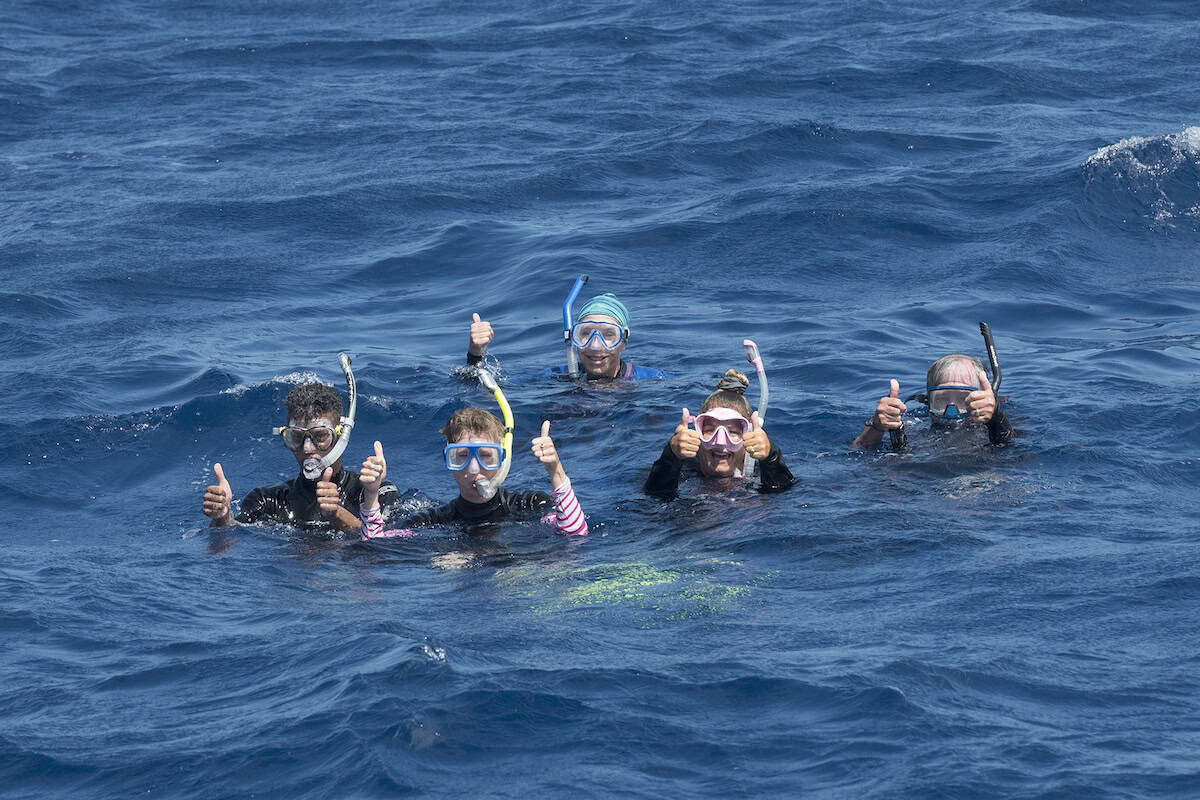
Snorkelers in Vava’u, Kingdom of Tonga, South Pacific give thumbs up after entering water. © Doug Perrine
5. Rushing the Experience
Snorkeling is as much about observation as it is about movement. Trying to see everything at once or moving too quickly can make the experience stressful, cause missed opportunities, and prevent you from noticing subtle but intriguing behaviors in marine life.
How to Avoid It:
- Move slowly with gentle fin kicks and pause frequently to observe your surroundings and practice buoyancy.
- Let your eyes adjust to the underwater world and notice details, like a fish weaving through coral or a turtle gliding in a sunbeam.
Snorkeling is a balance of preparation, mindfulness, and respect for the underwater world. By avoiding these common mistakes and following the guidance of expert naturalists, you’ll have a safer, more enjoyable experience and come away with incredible memories.
Ready to put these tips into practice? Explore our snorkeling trips and discover vibrant reefs, playful marine life, and unforgettable guided adventures.
An Oceanic Society traveler photographs blue chromis on the reef. © Keoki Stender
Hunter Rimmer
Check Out Our Amazing Trips
Request a free travel catalog from Oceanic Society.
Get a free copy of our Expeditions Catalog by email or mail (in the U.S.) and start planning your next adventure!

